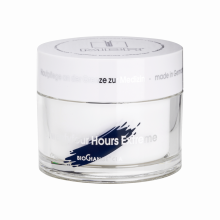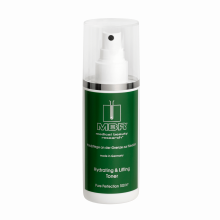DNA Damage and Repair
DNA is the critical molecule of life: it is the blueprint of the creature encoded in the genes. DNA is an indispensable part of the cell. Other parts of the cells, such as proteins, lipids, and RNA, can be replaced if need be. DNA, if lost or damaged, cannot be replaced.
DNA damage can have two main results: the cell mutates, or the cell dies. This means that the genes either change their properties or else they cease to exist. The bulk of mutations that occur in the DNA are either harmful or have no effect (are neutral). The elements that can harm the DNA and cause mutations are known as mutagens. Free radicals are the most common form of mutagen. Other mutagens are compounds of N-nitroso, asbestos, coal tar, and aldehydes. Most mutagens are also carcinogenic (meaning that they can cause cancer).
Mutagens attack the DNA regularly. The majorities of mutagen, such as oxygen-free radicals or certain aldehydes, are regular bi-products of the body's metabolism and cannot be avoided. Other mutagens like cigarette smoke or acetaldehyde (a byproduct of alcohol) are easier to avoid. Yet another category of mutagens comes from pollution in the environment. Different kinds of radiation can also produce mutations. UV radiation primarily affects the eyes (both the cornea and the retina) and the skin. X-rays which are high-energy forms of radiation, can cause mutations throughout the body.
Products protecting skin from cigarette smoke infulence
The theory that the buildup of mutations within the body is a key part of aging is not new. It has been plausibly demonstrated in several studies that maximal life span directly correlates with the efficiency of DNA repair in the body. People have the most effective repair systems and, therefore, the longest life spans among mammals. It has also been proved that the level of mutations goes up as the individual grows older. One possible reason for this is that the repair system itself is slowed by mutations over time, so the correction rate is slowed down accordingly. Additionally, as we get older, the body produces more free radicals, thus resulting in a higher number of mutations and other DNA lesions. The DNA damage theory of aging and the free radical theory are closely linked since DNA is one of the main victims of free radicals.
What are the effective ways of lowering levels of DNA damage and improving repair? The key thing to do is to try to minimize environmental damage, such as spending too much time in the sun or smoking. People who have trouble giving up smoking should at the very least switch to a low tar content cigarette. You will also need to make sure that you take basic precautions from over-exposure to the sun. Another way to reduce damage to the DNA is by keeping your antioxidant defenses at their maximal levels. (see our article on free radicals)
Currently, there is no proven way to improve the efficiency of DNA repair in cells. These systems are very complicated and contain a large variety of enzymes. DNA repair systems vary from species to species. The incomplete or improperly done repair can lead to mutations; these mutations are the main force of genetic change and, in turn of evolution. Increasing the level of mutations causes a species to evolve more quickly, but it can also shorten an individual's lifespan. The reverse can also be true. This explains why it would be highly improbable for an organism to develop a perfect repair system through the course of natural evolution.
People have the most effective DNA repair systems among the various species of animals. As a result, we have a relatively low number of mutations, so we age slower. Ironically, the effective repair system serves as a roadblock to lengthening our maximum lifespan. It is more likely that an increased level of DNA repair in humans will occur through scientific means rather than via natural evolution. It is true; some good research is being done on that very issue. The main DNA repair enzymes have to use special DNA precursors: which are called deoxyribonucleotides. Deoxyribonucleaotides are created from other precursors (ribonucleotides) as well as by ribonucleotide reductase (RR), which is the key enzyme. If the activity of RR is raised, then the number of deoxyribonucleotides goes up, and the DNA repair system works more efficiently. Research shows that the substances that can stimulate RR can partially protect animals from raised radiation levels, presumably by augmenting the quality of DNA repair. It is possible that a similar method could be used to slow the normal aging process.



